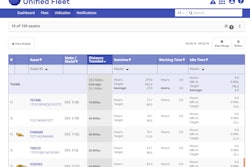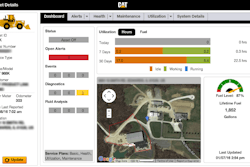Now that virtually all new earthmoving machines come with telematics systems that automatically, wirelessly communicate data from their on-board computers to you, the most-productive, lowest-cost contractors are applying that intel to gain competitive advantages. But the systems – such as Caterpillar’s Product Link, Komatsu’s Komtrax, Deere’s JDLink, Volvo’s CareTrack – produce so much data, it’s hard for new users to focus on who should get which information in their organization to produce the best results.
The Association of Equipment Management Professionals produced a comprehensive how-to book for equipment managers seeking successful ways to use telematics in their fleet operations called Telematics for Fleet Managers. It describes a six-step proof-of-concept process that anyone can use to demonstrate real results quickly without being overwhelmed by the technology.
Here’s an excerpt from Telematics for Fleet Managers that provides insightful suggestions for which data to focus on first when you want to prove the value of machine telematics:
To do an effective proof-of-concept test, you don't need to drown in data. Experts suggest choosing four areas to test your telematics data. Focus on operational data that you use daily on a consistent basis. Suggested starting data points are:
- engine hours
- fuel consumption
- machine alerts
- equipment location
Here are some good ways to start using them:
- Engine hour data can show machine health and usage. Suggested data goal: How many hours each day does 'Excavator A' actively work and/or idle? What percentage is idle time?
- Fuel consumption data will show you how a specific vehicle's performance compares to similar older/newer/larger/different-brand models or with different operators. Suggested data goal: How much fuel does 'Excavator A' use under Operator One compared with fuel consumed under Operator Two?
- Be sure to include one fault-code alert that can demonstrate your operator's usage. Suggested data goal: Number of Operator One's high-speed directional shifts compared to Operator Two's.
- Equipment operating location data will show you if a machine has stayed within a designated area (geo-fence) or how long it has been sitting unused on a project. Suggested data goal: Has equipment been started or moved after work hours?
By monitoring a complete, functioning slice of your telematics system, you can identify potential technical and logistical issues that might interfere with the success of a full implementation before you invest financial and human capital in a company-wide installation.



















